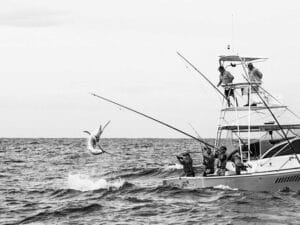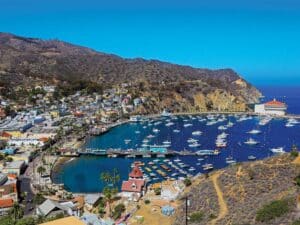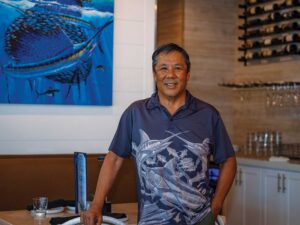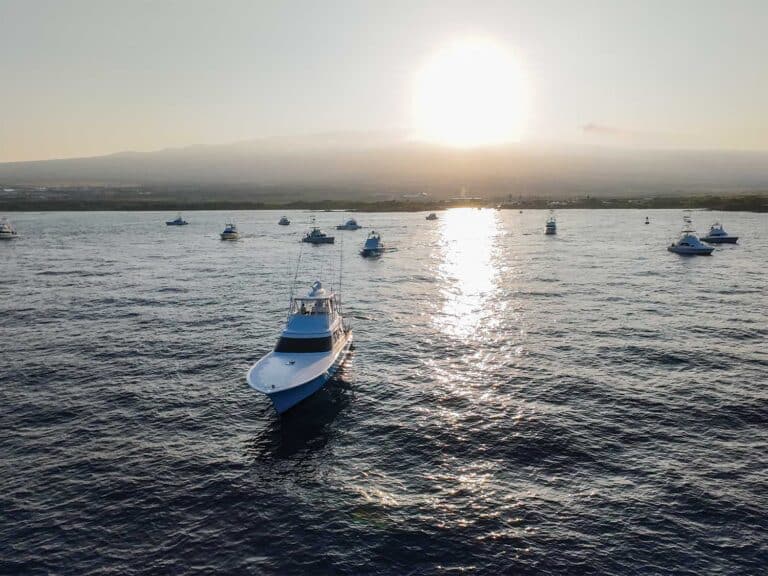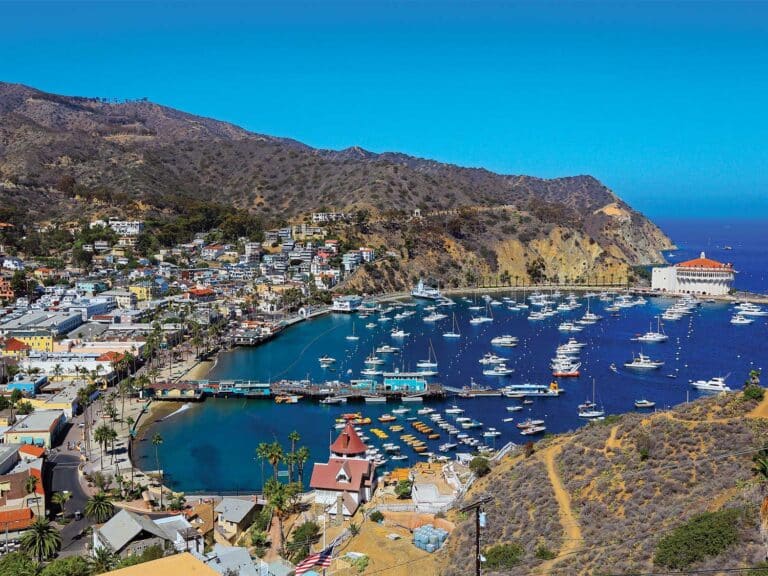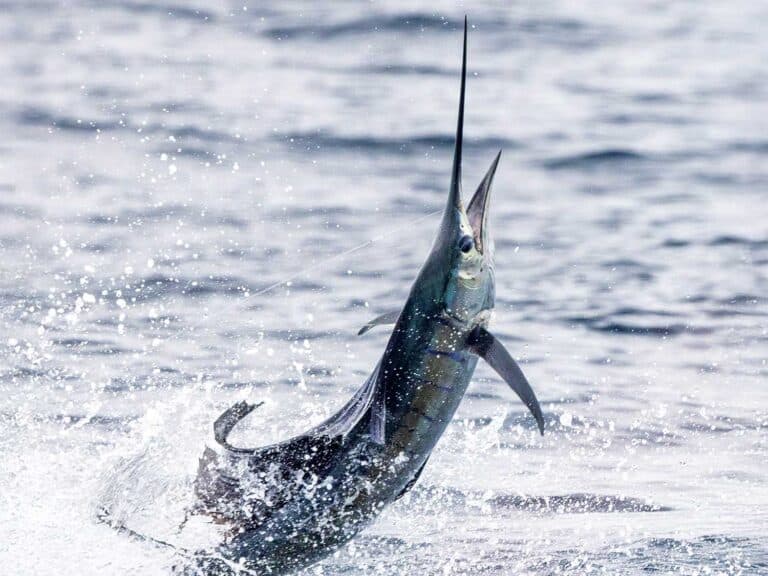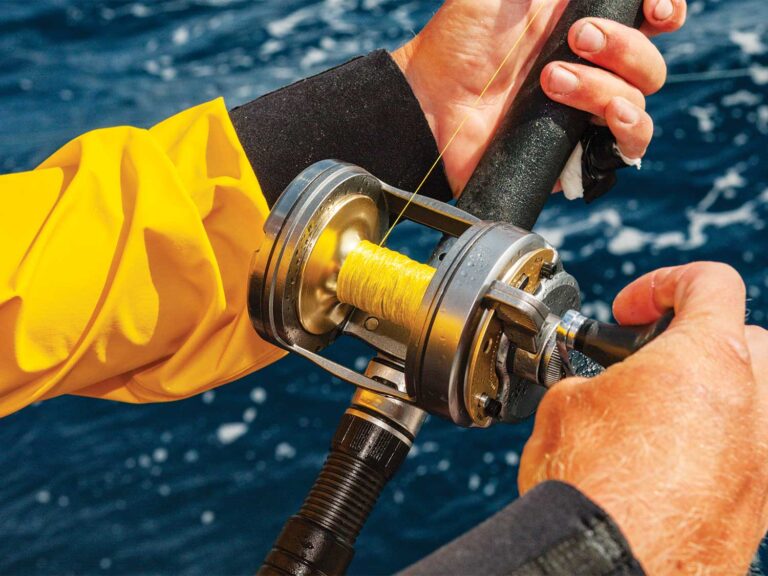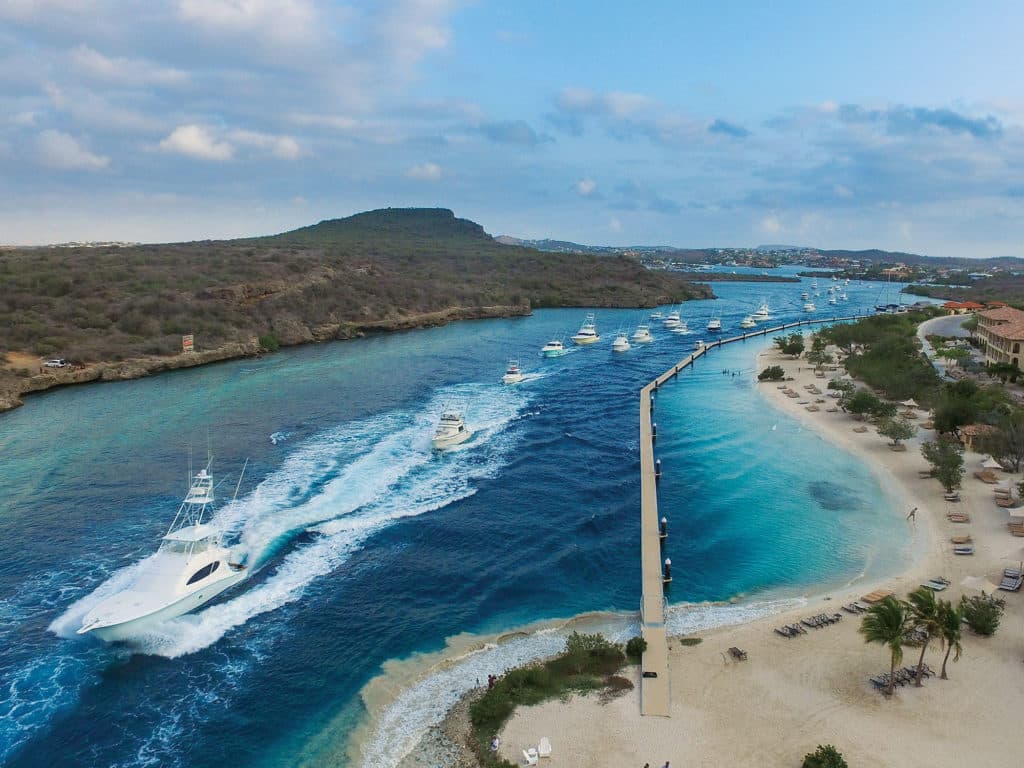
The rocky, cactus-strewn landscape of Curaçao looked more like the American Southwest than anything in the Caribbean. The incredibly deep blue color of the water surrounding this idyllic island nation is the reason I visited for the 50th anniversary of Curaçao’s Blue Marlin Release Tournament. Curaçao is similar to Aruba, which lies about 70 miles to the northwest; Bonaire, the smaller of the three islands, is some 45 miles east. There’s a sense of community among the islands because they share a similar heritage and languages, yet they remain geographically separate. And, despite having the second-oldest billfish tournament in the Caribbean, together these islands represent one of the least explored marlin fisheries anywhere in the world.

Geography is Key
Aruba, Bonaire and Curaçao are located in the Leeward Antilles, just off the northern coast of Venezuela. Along with St. Maarten, Saba and St. Eustatius, they comprise the Dutch Caribbean. And while Spanish explorers, including Christopher Columbus, initially discovered the islands in the late 1400s, they were ultimately colonized by Dutch settlers from the Dutch West India Company in the 17th century. In 1954, the islands were united as a single country, known as the Netherlands Antilles, until 2010.
Today, Aruba and Curaçao are countries within the Kingdom of the Netherlands, while Bonaire is a special municipality of the Netherlands. With this strong Dutch influence comes an Old World approach to education and food — instead of chips and salsa, you’re more likely to find bitterballen (chopped beef, herbs and spices rolled into a ball and deep-fried) and kaas (Gouda cheese) alongside a cold Heineken when you hit the bar. All three islands have very low rates of crime and poverty, as well as high rates of literacy. Most residents speak at least four languages: English, Dutch, Spanish and a local dialect known as Papiamento that’s spoken in this part of the world only.
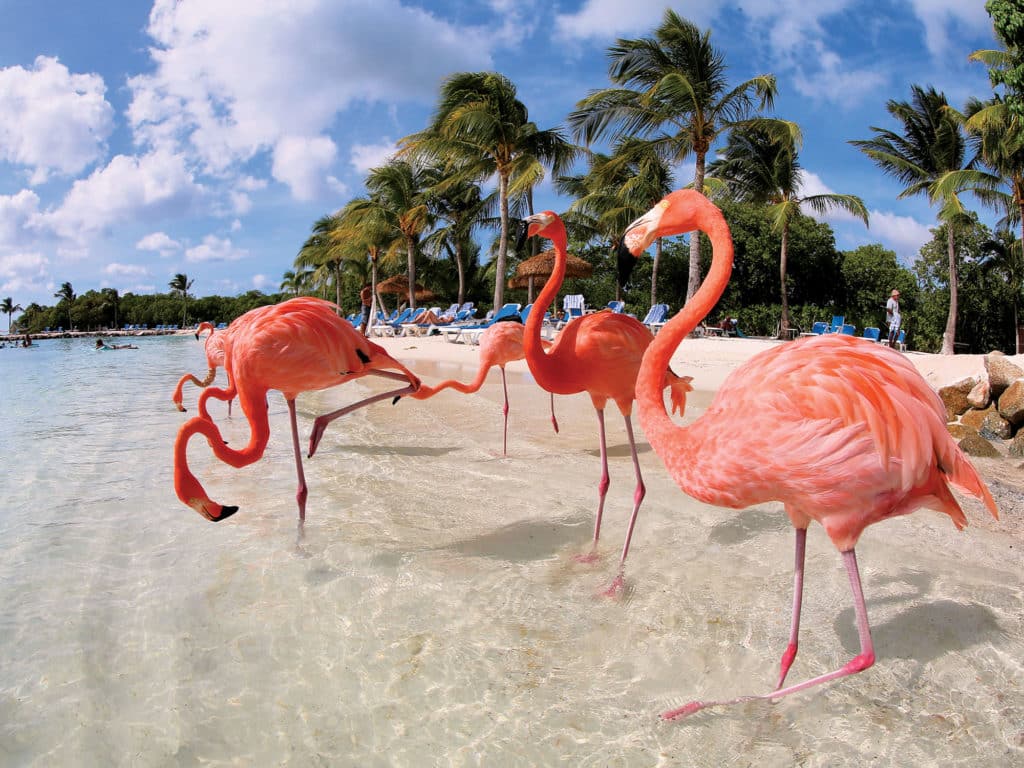
The water gets very deep, very quickly here. Throw a rock from the reef and it can sink 50 or 100 feet. Before you know it, the thousand-fathom curve has come and gone, and it just keeps getting deeper from there. Because of that, most locals fishing off Aruba, Bonaire or Curaçao rely much more on current, water temperature and water color when they start looking for blue and white marlin and sailfish. And while Aruba is located just 15 miles from the coast of Venezuela, it’s about 140 miles from Curaçao to the famous La Guaira Bank.
Eric Mansur and his brother Ruben are two of Aruba’s most well-known private boat owners. Like many in this part of the world, they eschew professional captains, preferring to run their own rigs. Eric recently built the 58 Paul Mann Alina, while Ruben helms the 57-foot Mann Naira. Both have their sons and other family members in the cockpit as anglers, and both are formidable tournament competitors anywhere they fish throughout the Caribbean.
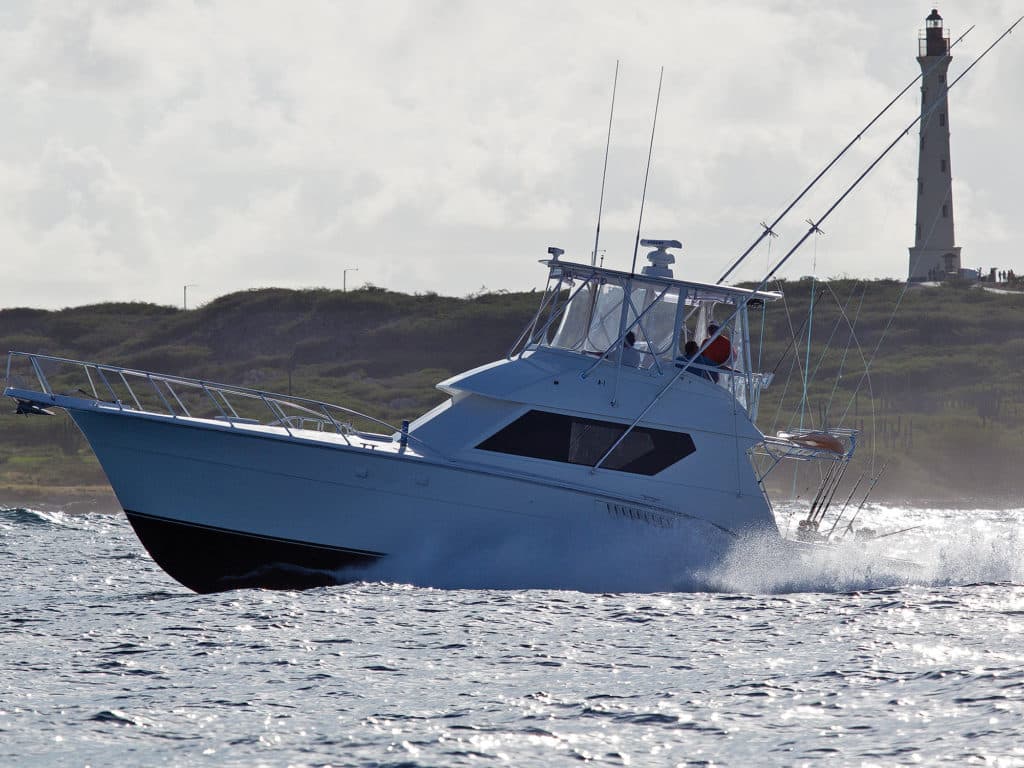
A Day Off Curaçao
I had a chance to fish aboard Alina with Eric Mansur prior to the start of the Curaçao Blue Marlin Release Tournament. When asked about our time of departure, I was told to be at the boat at 8 a.m. — not exactly the crack of dawn in the Caribbean.
I was early, so we had a leisurely breakfast on board before finally getting underway about 8:30 for the short run to the nearby islet known as Klein, or Little, Curaçao. We put the lines in before 9 a.m. and started tacking around a fleet of small commercial-fishing boats, which were busy chumming up football-size tuna. Within no time, we had a beautiful teaser bite in the midst of a tuna blitz, and it was game on. We raised another small blue into the spread that afternoon but couldn’t entice a bite. We were bummed with only one flag flying, but a blue marlin any day is still a good day, and we returned to the Curaçao Yacht Club one for one. The really incredible thing though was the water depth: We hooked up less than a half-mile off Klein Curaçao in almost a thousand feet of water. Turn inshore and it jumps to 200 feet; turn away and it plummets to over 1,500 feet.
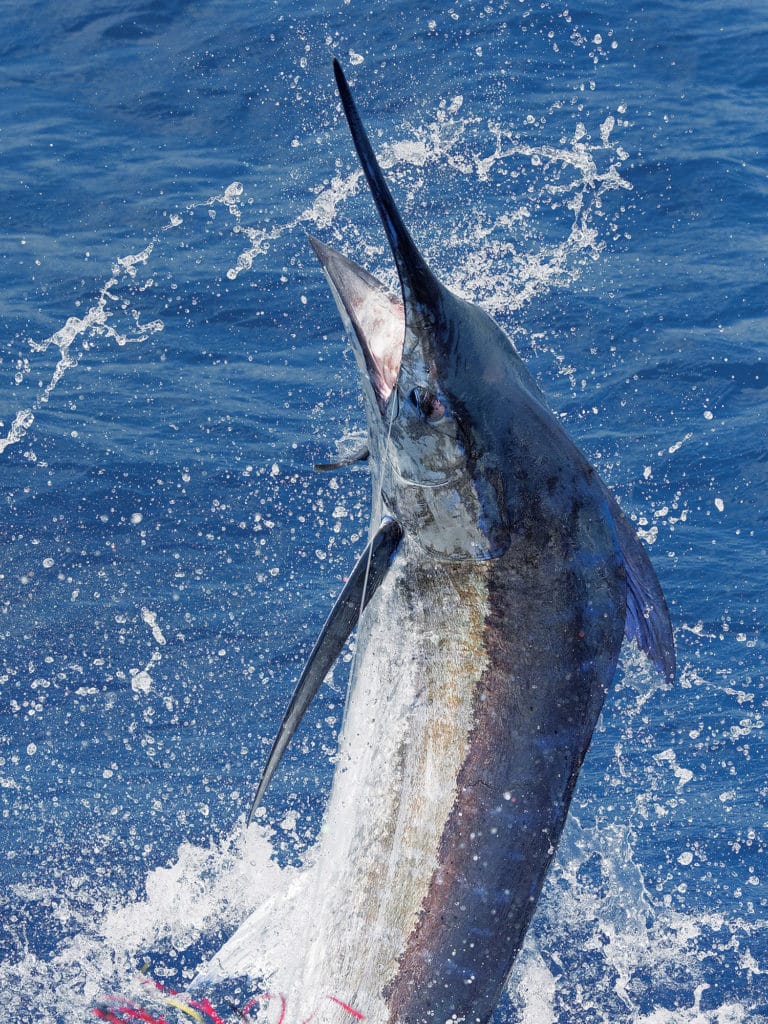
Irving Irausquin currently runs the 64-foot Bayliss Hey Chama. He’s one of the top locals in Curaçao, having fished these waters all his life. Irausquin says most people believe there’s a natural migratory pattern to the north of the islands; when it’s combined with a hard southerly current, fish are driven to the south, right along the beach. “You wouldn’t believe it, but some of the best fishing we’re having now is right on the beach in 300 to 900 feet of water around Klein Curaçao,” he reports. For comparison, some of Irausquin’s best days have included four blue marlin releases in a day and plenty more white marlin. At one point in January, the team was 14 for 24 on a mix of blues, whites and sailfish in three days, including going six for nine on white marlin on their pre-fish day for the Bonaire International Fishing Tournament. They continued the hot streak right into the tournament and won with two blue marlin, two white marlin and four sailfish releases in the two days of competition.
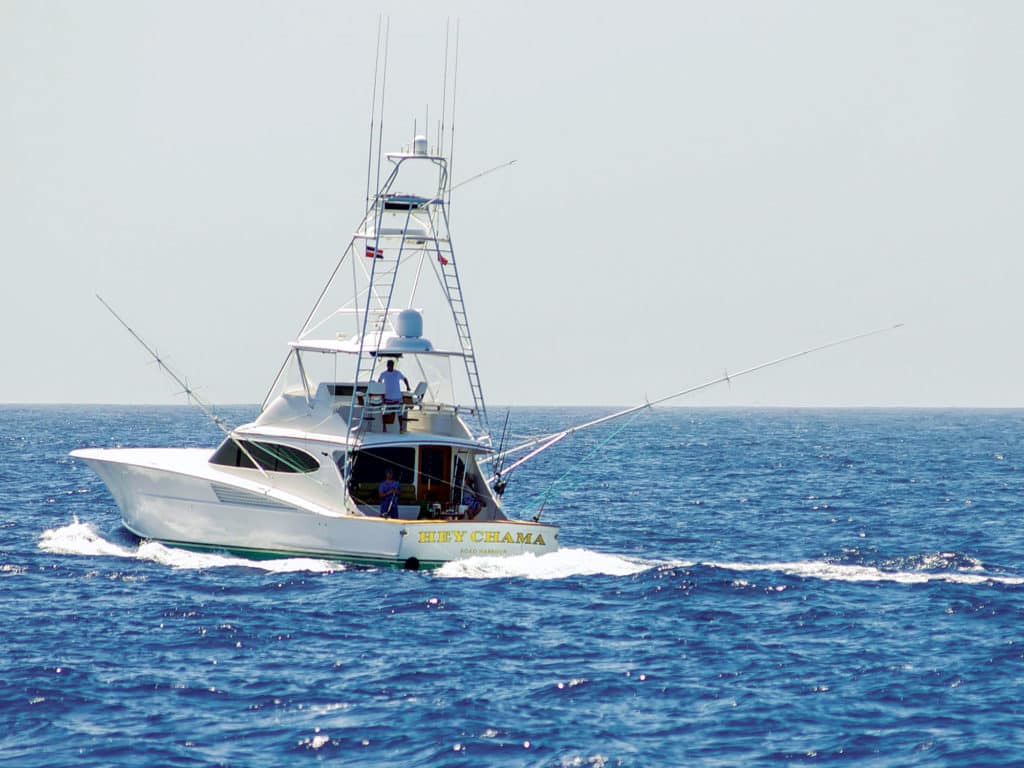
The dominant underwater structure is the Curaçao Ridge, an underwater mountain range that runs east and west, starting about 38 miles northeast of Curaçao and Bonaire. “We’re starting to work with The Billfish Foundation to do some tagging,” Irausquin says. “Hopefully we can determine if these fish are going to or coming from Venezuela, or if they go down the coast of South America toward Brazil.”
And while the release numbers might not be off the charts, another benefit of the fishing in this part of the world is consistency. Some months can be a little better than others, yet it’s generally pretty good year-round. Tournament season runs from October through March, but it’s possible to catch a blue marlin or two on any given day even during the summer months.
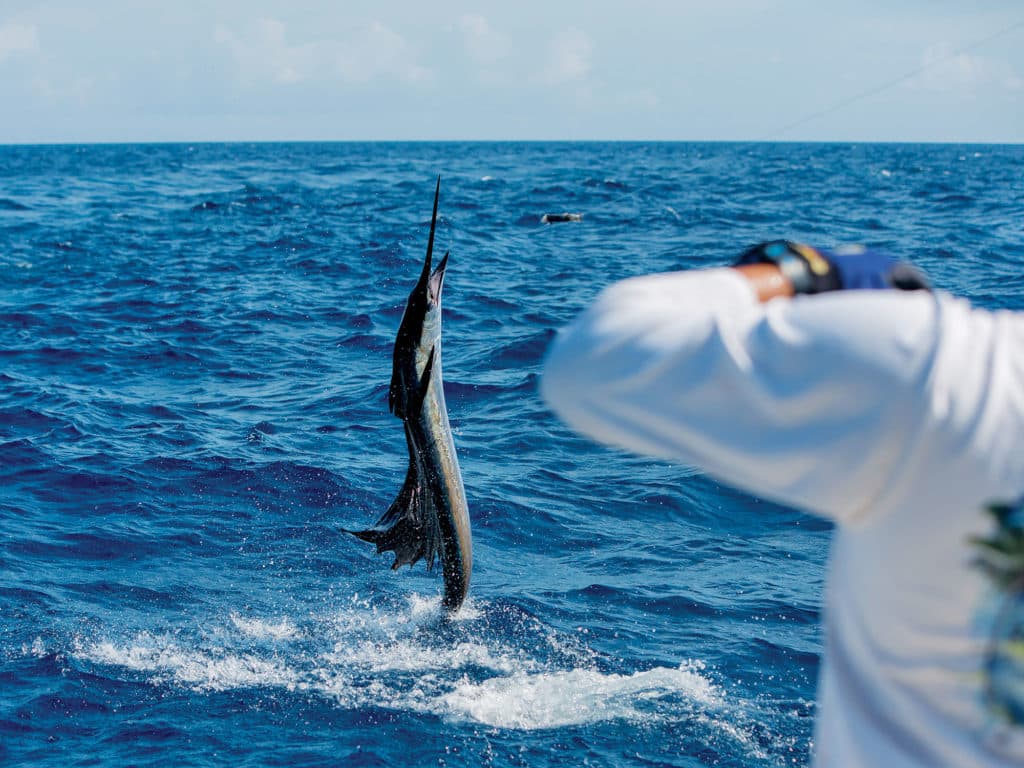
Exploring Aruba
Milton Pichardo captains Teaser, a 35-foot Bertram that is one of the top charter operations in Aruba. He says fall is prime sailfish season, when they can be found on the south side of the island in shallower water, sometimes balling bait on the surface. For marlin, though, he heads for the eastern and northern ends of Aruba, looking for good current and cobalt blue water along with bait.

“We have great fishing year-round in Aruba,” comments Eric Mansur. “Blue marlin can be caught every month of the year, but the fall is the best time for a shot at a grand slam when the whites and sails move in.” Like most of the boats in the region, Eric turns to a proven spread of circle-hooked, chin-weighted ballyhoo, along with a pair of dredges operated from the cockpit and squid-chain teasers with chase baits run from the bridge. Thirty- to 50-pound-class gear is preferred for day-to-day fishing, with a larger setup ready to pitch just in case a giant blue marlin shows herself in the spread. Ballyhoo are often tipped with a small cup-faced chugger head to add a pop of color and action, especially when targeting blue marlin.
I didn’t have a chance to sample the fishing action off Bonaire, but the locals report the bite is similar to what’s found off Curaçao and Aruba. The runs to the fishing grounds are short, and it’s unusual to travel for more than 30 or 45 minutes in any of the three locations. Long runs can even be counterproductive unless you decide to explore a distant location. Aruba, Bonaire and Curaçao are situated below the hurricane belt, so it’s a safe bet that no destructive storms will disrupt the season.
Island Activities
On nonfishing days, you’ll find plenty to do in all three destinations. The snorkeling and diving is some of the best on the planet, so you can definitely channel your inner Jacques Cousteau. If you don’t feel like getting wet but still want to check out the underwater sights, there’s a submarine that sails from downtown Oranjestad in Aruba. The trip takes you down to 150 feet and past two wrecks that are off-limits to fishing, so you’re almost guaranteed to see plenty of aquatic life.
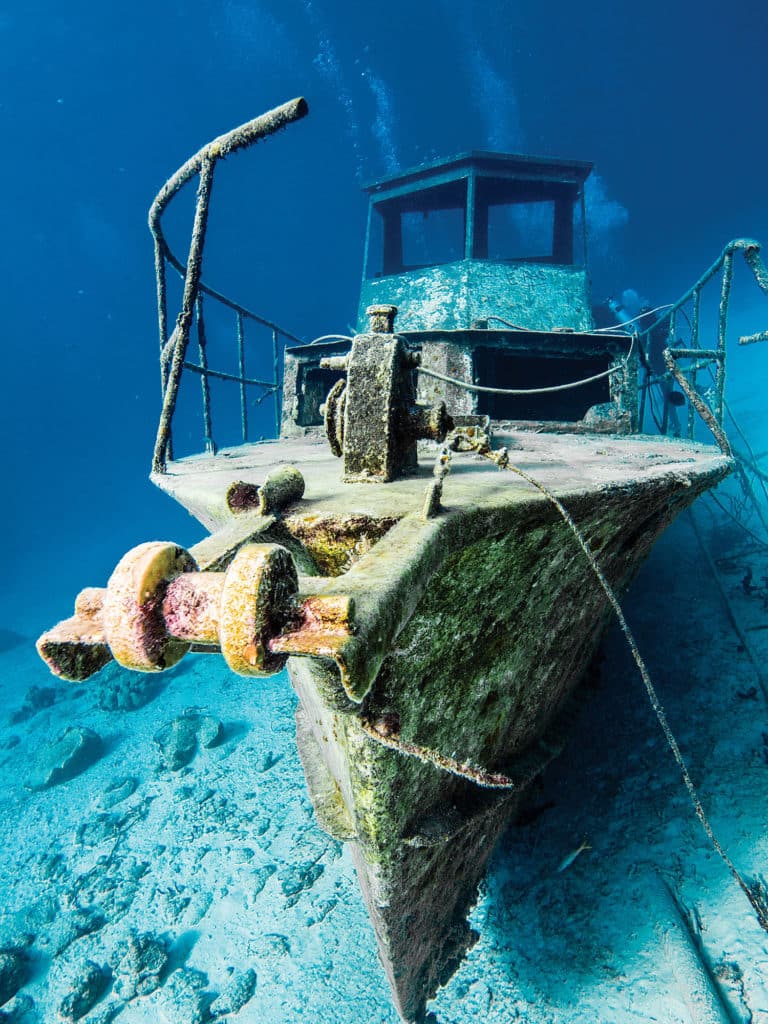
Sightseeing is also a great way to spend a day on any of the three islands; I’d recommend renting a car to get around from place to place. Just grab a map and hit the road. Several national parks in each of the three islands are worth your time, and it’s nearly impossible to get lost. In Curaçao, a walking tour of downtown Willemstad is a great way to spend the afternoon. The Queen Emma Bridge connects the districts of Otrobanda and Punta, with numerous historic sites, old forts and museums along the way. Dining options are widely varied, and Dutch cuisine is delicious, even if some dishes are nearly unpronounceable.
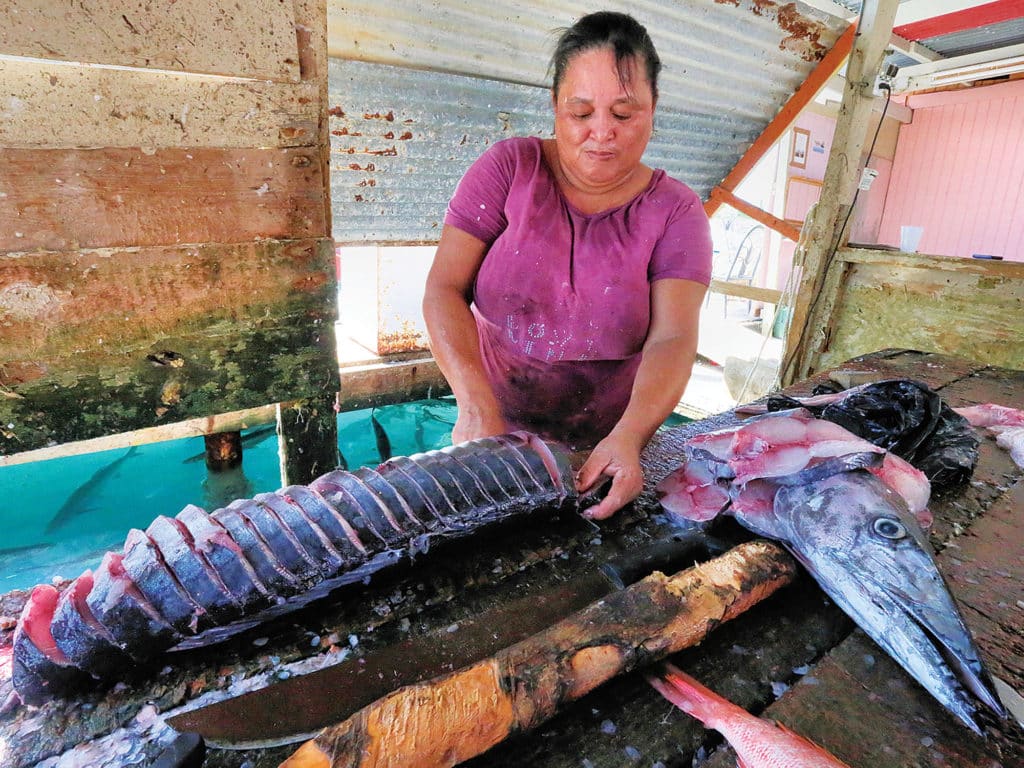
A Must-Visit
There are very few, if any, secret hot spots left in the world, but a handful of destinations deserve further serious exploration by the fishing community. Aruba, Bonaire and Curaçao lead that very short list. So if you’re looking for a new destination with consistently good year-round fishing, friendly locals and a safe, family-approved setting, head for the islands of the southern Caribbean — you’re sure to love them as much as I do.
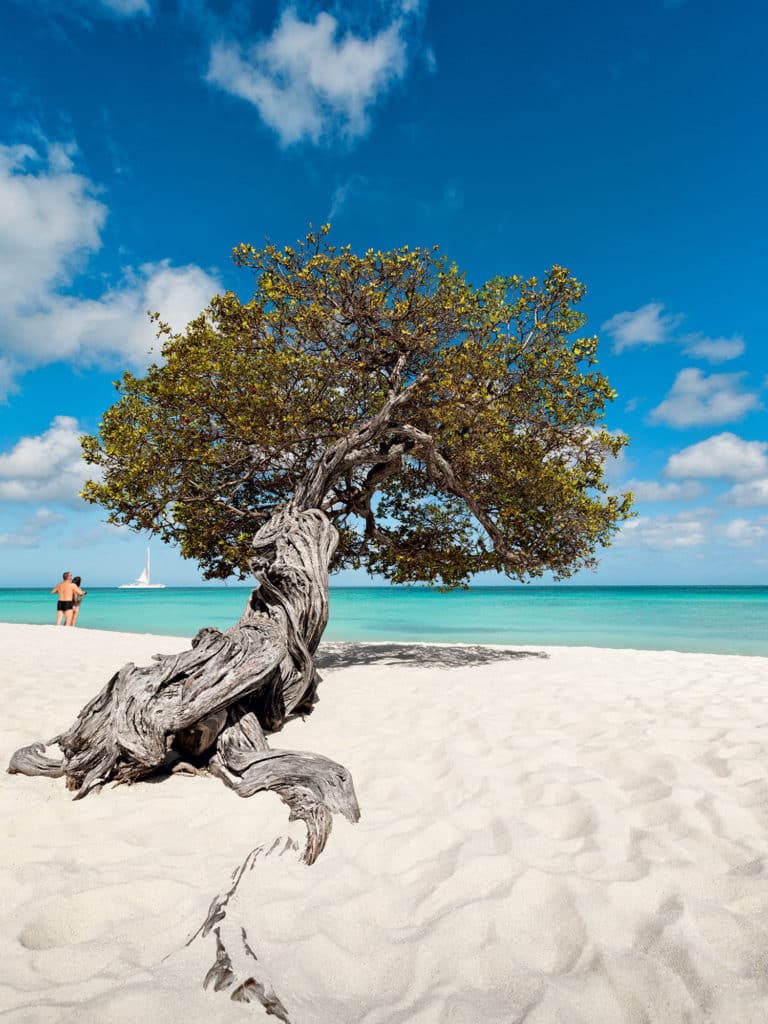
Travel Insider
Airports
In Aruba, visitors arrive at Queen Beatrix International Airport (AUA). In Bonaire, it’s the Flamingo International Airport (BON) while Curaçao is home to the Hato International Airport (CUR). In Aruba, those returning to the United States clear U.S. customs and immigration prior to leaving the island, so allow for extra time at the airport on departure day.
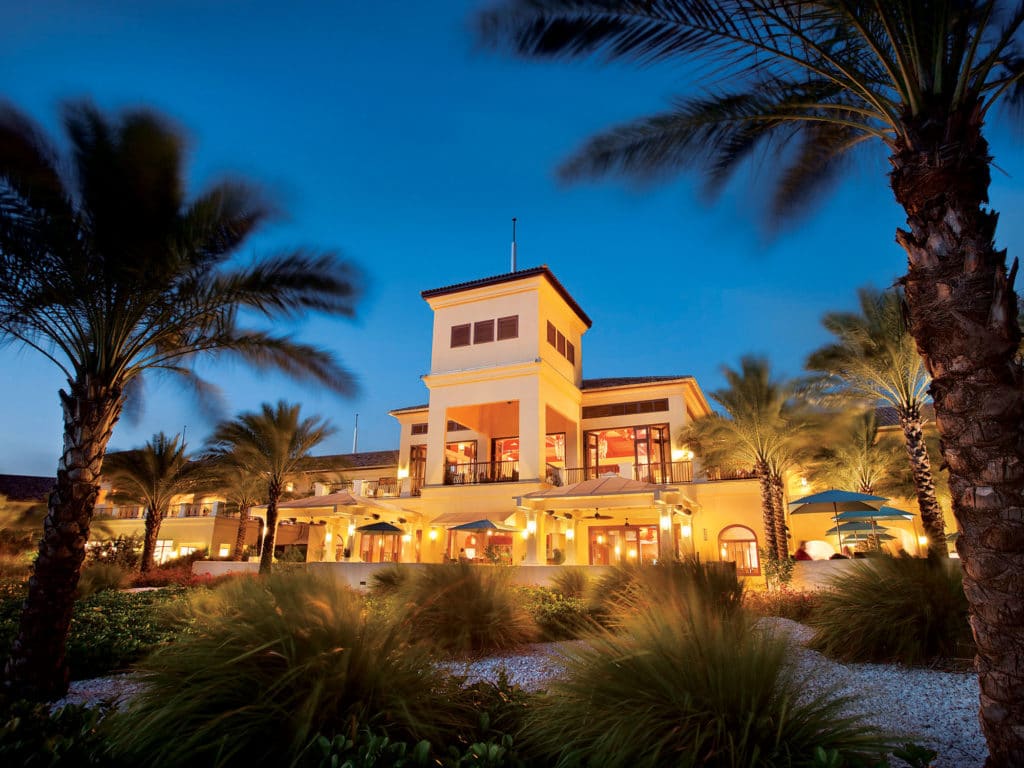
Lodging
One of the most stunning properties in Curaçao is the Santa Barbara Beach and Golf Resort. The resort has 350 rooms, most with ocean views. There are two marinas as well as the PGA-level Old Quarry golf course, a half-dozen or so restaurants and bars, tennis, diving, watersports and more. In Aruba, head for the Renaissance Aruba Resort and Casino in downtown Oranjestad. Across the street is the Renaissance Marina, home to most of the island’s charter fleet.
Languages and Currency
Aruba uses the Aruban florin, and in Curaçao it’s the Netherlands Antillean guilder, but U.S. dollars are widely accepted throughout the islands — and the dollar is the official currency in Bonaire. Changing money isn’t required, although you might receive change from your purchases in the local currency. Since nearly everything is imported, prices are a bit higher than what you’d expect to pay in the States, but not outrageously so. And English is spoken nearly everywhere, along with Dutch, Spanish, Papiamento and several other languages. The people are warm and friendly toward visitors.
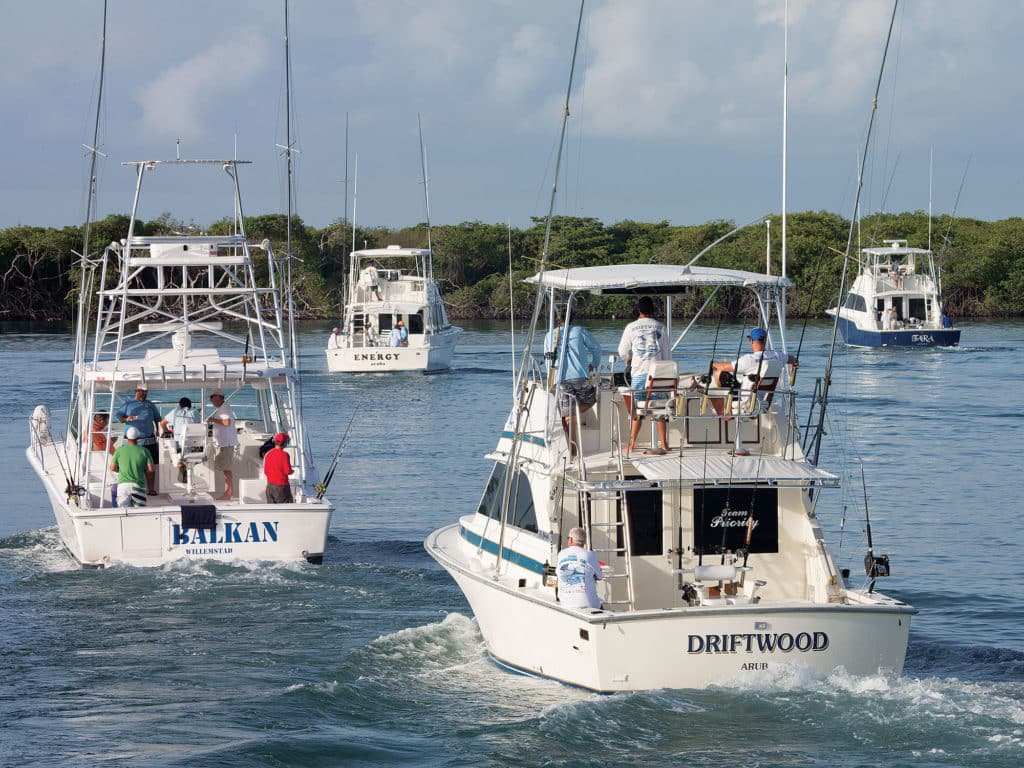
Charters
Charter fishing in Aruba, Bonaire and Curaçao is a bit different from most other destinations around the world. Because of the influx of customers from the numerous cruise ships, most boats are geared toward half-day trips. While it’s an inexpensive way to get offshore, it’s not the best choice if you’re making a serious effort to chase blue or white marlin or sailfish. Contact your captain well in advance of your trip to discuss your plans, and be ready to fish for at least one full day, if not multiple days. This will give you a better shot at a trip of a lifetime.


